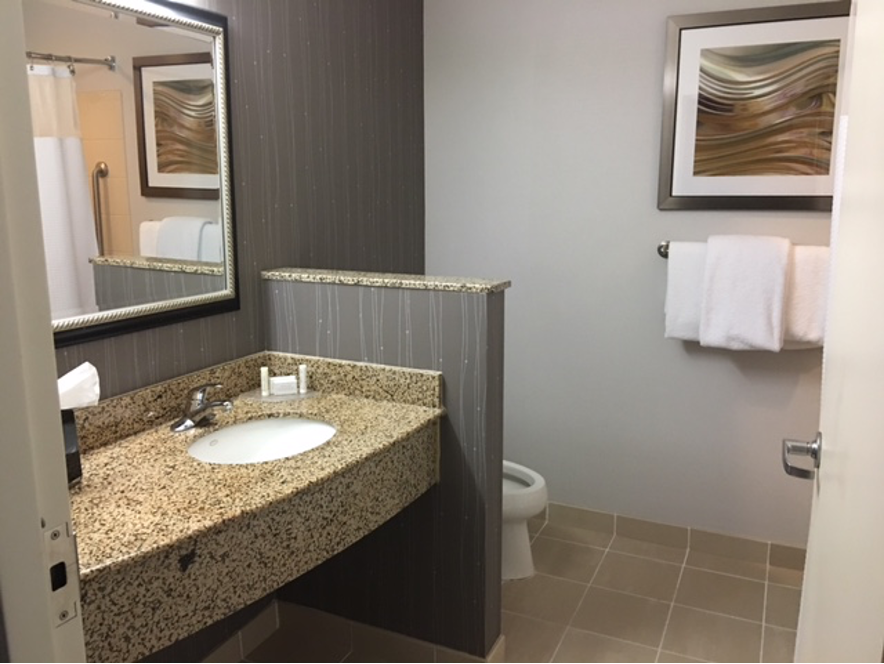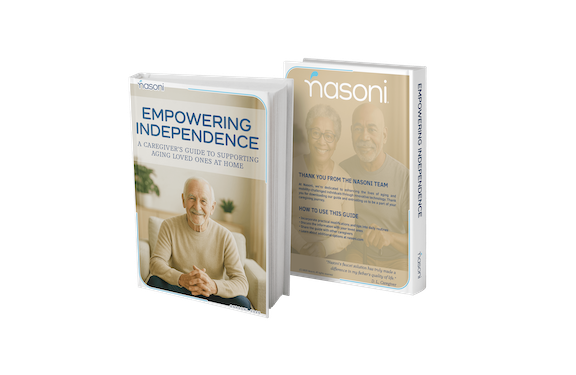How to Have a Cleaner, Healthier Bathroom Environment, Without E-Coli. 3 Facts And 1 Solution

Bathrooms are very hard to clean and relatively easy to contaminate. Even if you're obsessed with housework, no product maintains your bathroom crystal clean for days. If you inspect carefully with advanced tools, bathroom hygiene might not even survive the first toilet flush.
Unknowingly, some of us continue to use the bathroom for many days after each cleaning round. We touch the surface of the countertop and then take a sip of water. We even keep glasses in the bathroom and use them without the slightest suspicion of what's going on.
Yes, some of us are rinsing with toilet water. That's a gross exaggeration we want to use to make our point: there should be an alternative to reduce contamination every time you use your bathroom. But let's start this topic by pointing out some facts that your doctor never told you about bathrooms, your toilet, and our daily risk of infection.
Fact # 1. There's an aerosol effect from your toilet
Flushing the toilet is one of those day-to-day facts we often take for granted. But some of us didn’t know that toilets create an aerosol effect. In other words, it throws out sprinkles you can even feel if you're staying close. Now, if you feel one single drop in your leg, just imagine how many microscopic droplets your toilet is releasing for every single flush.
This is not a recent discovery. For many years, scientists and TV programs have tried to raise consciousness about this fact: toilets create an aerosol effect. Everything in your bathroom is potentially contaminated for each toilet flush.

Note: This image has been enhanced to portray the invisible aerosol effect.
For example, a classic study of the aerosol effect evaluated microbes' presence in the toilet bowl and the water. Air sampling evaluated aerosol presence in the toilet cubicle after flushing, too. The investigators found that a large number of microorganisms persisted after one flush and became disseminated in the air by every further flush. In other words, your toilet is releasing microscopic particles of your feces when you flush. It continues circulating your feces in the air when someone else uses the bathroom (1).
Another study recently evaluated the same thing using more modern toilet models and fluorescents microspheres to markdown precisely what happens when you flush. The investigators reported that every single flush produced up to 145,000 droplets, which left the toilet bowl and contaminated all adjacent areas (2).
Fact # 2. Glasses are usually contaminated in hotels
With fact number 1 covered, you would probably want to clean your bathroom more often, as luxury hotel personnel does. Or not. Hotels are not as safe and clean as people once thought, as evidenced by tons of reports, hidden cameras, and TV news crews. If you see one of these hidden cameras, you would probably not want to touch countertops or drink from hotel glasses without disinfecting them.

We can't generalize here, but TV crews have spotted many disinfection irregularities, even in luxury hotels. Dust in bedsheets and drool marks on pillows are bad enough, but it gets worse when we enter the bathroom. The aerosol effect discussed above has already contaminated surfaces inside the bathroom with the previous guest’s visit. You would then be horrified when those glasses you’re about to use are cleaned with inadequate tools, water only, or left in the sink without previous disinfection.
So, even if you're checking in and everything looks fantastic, don't be overconfident. Remember the effects of toilet aerosols, especially in any glass standing on the countertop.
Fact #3. Toilets can spread coronavirus, too
As mentioned earlier, in 2013, one of the articles reviewed the coronavirus as one of the microorganisms spread in the air in every toilet flush. They noted that sewage-related aerosols were proposed as one of the modes of transmission of SARS coronavirus in a 2003 outbreak located in an apartment complex in Hong Kong. They mentioned that coronavirus and other viruses are present in the stools, vomit, and other fluids, and they can survive for a long time on various surfaces (1).

More recently, and now referring to the new outbreak of COVID-19, an article published in the journal Physics of Fluids evaluated the question: "Can a toilet promote virus transmission?". They mention that fecal-oral transmission of this new coronavirus is not only possible but also very common. Thus, toilets and bathrooms are a potential source of spreading viruses, a scientific fact that scientists and public health campaigns do not mention very often. Therefore, awareness and efforts to implement sanitary safety are still insufficient.
In their paper, these investigators evaluated the aerosol effect with a computational fluid dynamics model. They simulated two types of modern flushing processes known as annular flushing and single-inlet flushing. They reported a massive transport of virus particles after each toilet flush. Up to 60% of particles reached above the toilet seat with a potential risk of the viral spread of coronavirus (3).
Wrapped plastic cups, not an environmental-friendly alternative
What can we do to counter this hazard? Most people would simply close the toilet lid before flushing, but that does not entirely solve the problem. There's always a gap between the lid and the toilet bowl, and remember how even face masks fail when they don't fit your face. Aerosols have an erratic movement in the air, which may easily escape your toilet's lid. Moreover, closing the lid before flushing is a habit not all of us have and something you do behind closed doors. How do you make sure that your relatives and visitors are doing the same thing?
Hotels also tried to counter this problem by providing wrapped plastic cups instead of the usual glass to rinse your teeth in their bathrooms. But even this safer alternative is also a faulty solution because it contributes to waste production, precisely in touristic places where nature should be preserved.

Are we asking too much? Is there an environment-friendly, sustainable, and more reliable way to avoid rinsing your mouth with toilet particles?
A versatile solution for homeowners – the Nasoni Fountain Faucet
Nasoni is a revolutionary faucets company with an interesting fountain faucet design, useful to get rid of all of these issues simultaneously. These faucets have what Nasoni calls its patented Dynamic Fountain Flow technology, inspired by drinking water fountains found in various spots in Rome.
But how do they solve the toilet aerosol effect?
What Nasoni’s bathroom fountain faucets do is spring water upwards into the perfect arc of water when you rotate the fountain lever. Nasoni’s patented dynamic fountain flow uses kinetic energy and does not require a power source of any kind. So, now you don't need a glass or any other contaminated item in your bathroom to rinse, drink water, shave, brush your teeth, wash your face, or take a pill. If you combine this type of faucet with regular cleaning of your bathroom, you will have no problems with the toilet aerosol effect reaching your mouth. Plus, you will be protecting your back and neck if you have a chronic musculoskeletal condition and are not recommended to lean.

This technology was scientifically tested by Dr. Anna Jeng from the College of Health Sciences. In her study “Assessment of Airborne Microbial Safety of Drinking Water from Nasoni Fountain Faucet”, E. coli bioaerosols were generated by a hydraulic spray nozzle. She used a non-disposable cup and compared it to the fountain feature in Nasoni fountain faucets. After collecting water samples from both sources, she reported that non-disposable cup water contained 866 MPN/100 mL of E. coli, and using this Dynamic Fountain Flow technology, the number of microorganisms per 100 mL of water was reduced to 88 MPN (a measure for water quality that works similar to colony-forming units). Thus, the contamination rate is around 10 times lower. The report concluded by saying: “The use of the fountain feature of the fountain faucet is much safer than the use of the non-disposable cup when both are exposed to the aerosol effect.” (4).
But we also mentioned it is an environment-friendly solution because by bringing water closer to your face, water efficiency in fountain mode is 88% higher without water spills and without wasting our planet's precious resources.
So, either if you're worried about the spread of coronavirus, if you want to contribute to the environment, or if you have chronic back pain or neck conditions, Nasoni faucets are now a versatile solution for homeowners who want to stay safe and live in a sustainable world.
References:
- Barker, J., & Jones, M. V. (2005). The potential spread of infection caused by aerosol contamination of surfaces after flushing a domestic toilet. Journal of applied microbiology, 99(2), 339-347.
- Johnson, D., Lynch, R., Marshall, C., Mead, K., & Hirst, D. (2013). Aerosol generation by modern flush toilets. Aerosol Science and Technology, 47(9), 1047-1057.
- Li, Y. Y., Wang, J. X., & Chen, X. (2020). Can a toilet promote virus transmission? From a fluid dynamics perspective. Physics of Fluids, 32(6), 065107.
- Baskette, K., Tech, C. V., Anderson, L., & Redican, K. J. (2020). VA Journal of Public Health. Public Health, 4(1).




Leave a comment